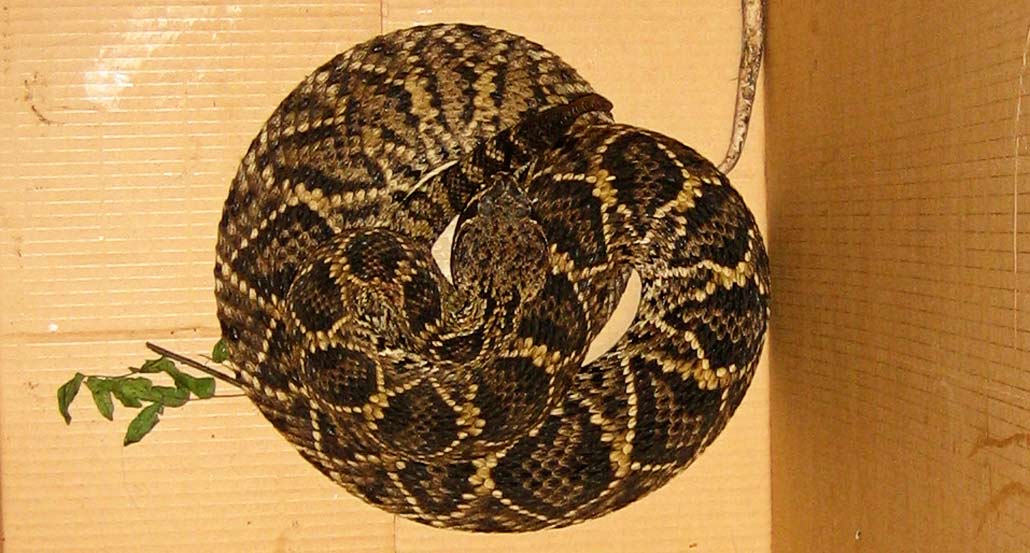- USA Wildlife Removal Education Guide - Diamondback Rattlesnakes: Patient Predators
Diamondback Rattlesnakes: Patient Predators

The diamondback is the biggest and most dangerous of the family, sometimes reaching eight feet in length and weighing up to 15 pounds. In the west, the snakes’ range extends across the southwestern United States and deep into Mexico. The Eastern Diamondback inhabits all of Florida and reaches across the coastal plains of the Gulf States and northward as far as North Carolina. Home range for an adult male can be as much as 500 acres. Long-lived, they have been known to live as long as 20 years but 10 is a typical life span in the wild.
The heavy-bodied snakes are named for the rows of hollow, interlocking bony ringlets at their tail. When the snakes are startled or threatened, they form their bodies into a coil with their head erect in the center and the rattle erect, normally shaking it to produce a buzzing sound to warn off the perceived threat prior to an actual strike.
Diamondbacks are well named. The Western variety displays diamond-shaped patterns in a variety of color combinations that include grayish-brown, pinkish-brown, brick red, yellow, and chalky white. Eastern Diamondbacks generally have a yellow-bordered, light-centered black pattern.
Female rattlers mature and can give birth as early as two years of age after gestating for six- to seven months. The young are usually born in late summer, with litter size ranging from about a dozen to more than 30 young snakes that can be as much as 18 inches long and which are self-sufficient at birth
Diamondbacks feed on small mammals such as rabbits, mice, rats, squirrels and small birds. Their hunting strategy involves waiting motionless in a coiled position until suitable prey ventures within striking distance for as much as a week at a time. When the prey is close enough, the snake strikes and injects its venom which kills by attacking the blood, tissue and nervous system of the prey animal. While effective predators, they have also been known to go up to two years without food in the wild.
Solitary outside of the mating season, Diamondbacks normally shelter in other animals’ burrows, in stump holes, root channels and other underground cavities. While widely feared the snakes are not naturally aggressive towards humans and large animals and given the choice, they prefer to issue their warning and when the opportunity presents, to quietly disappear. Yet, while humans are advised to “see and avoid,” there are still many instances of rattlesnake bites every year, some of them fatal.
If you need help, we service the entire USA! Click here for a wildlife removal specialist in your town!
Go back to the main page for more information about Diamondback Rattlesnakes: Patient Predators.

